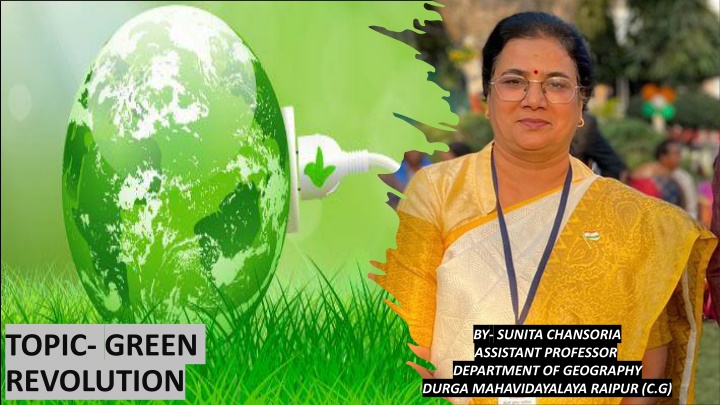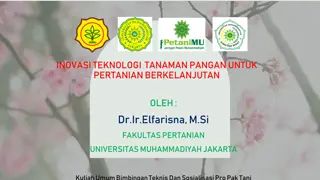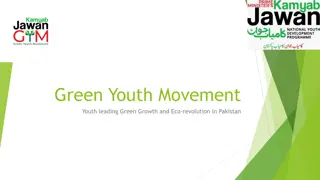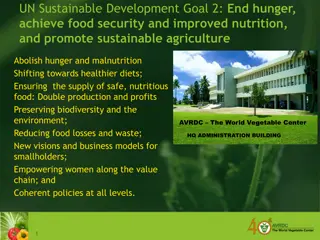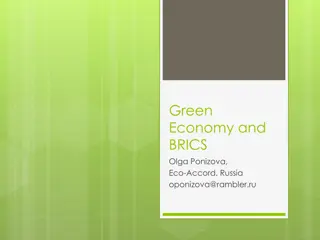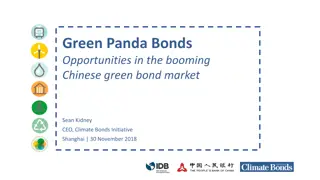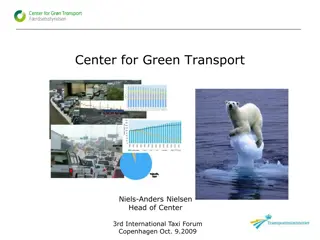Green Revolution: Transforming Agriculture for a Sustainable Future
The Green Revolution marked a significant period in global agriculture with the introduction of new technologies like chemical fertilizers, pesticides, and high-yielding seeds. This revolution, attributed to Norman Borlaug, boosted crop productivity, ensured food security, and saved millions from famine. In India, the Green Revolution led to major advancements in wheat and rice production, under the leadership of Dr. MS Swaminathan. The adoption of multiple cropping systems, modern machines, and improved farming practices resulted in increased production, economic growth, and rural development. The environmental benefits of producing more food on the same land were also notable.
Download Presentation

Please find below an Image/Link to download the presentation.
The content on the website is provided AS IS for your information and personal use only. It may not be sold, licensed, or shared on other websites without obtaining consent from the author.If you encounter any issues during the download, it is possible that the publisher has removed the file from their server.
You are allowed to download the files provided on this website for personal or commercial use, subject to the condition that they are used lawfully. All files are the property of their respective owners.
The content on the website is provided AS IS for your information and personal use only. It may not be sold, licensed, or shared on other websites without obtaining consent from the author.
E N D
Presentation Transcript
BY- SUNITA CHANSORIA ASSISTANT PROFESSOR DEPARTMENT OF GEOGRAPHY DURGA MAHAVIDAYALAYA RAIPUR (C.G) TOPIC- GREEN REVOLUTION
The Green Revolution was a period when the productivity of global agriculture increased drastically as a result of new advances. During this time period, new chemical fertilizers and pesticides were created. The chemical fertilizers made it possible to supply crops with extra nutrients and, therefore, increase yield. The newly developed pesticides controlled weeds, deterred or kill insects, and prevented diseases, which also resulted in higher productivity. WHAT IS WHAT IS GREEN GREEN REVOLUTION REVOLUTION
The beginnings of the Green Revolution are often attributed to Norman Borlaug, an American scientist interested in agriculture Dr. Norman E. Borlaug receives the Congressional Gold Medal in 2007. Burlaug, a 1970 Nobel Laureate, was honored for his work in the 'Green Revolution,' saving millions of lives from famine in India, Mexico, and the Middle East. History and History and development development of of Green Revolution Revolution Green
In 1965 the government of Mrs. Indira Gandhi decided to major steps on agriculture conditions. Thus Green Revolution was applied to the period from 1967 to 1978 basically in the parts or Haryana and Punjab. At this stage concern was on Wheat and Rice. Dr. MS Swaminathan from India led Green Revolution as a Project. Green Green Revolution Revolution in India in India
Multiple Cropping System Seeds with superior genetics Proper irrigation system HYV seeds Pesticides and fertilizers Modern machines Expansion of farming areas Methods Methods used in used in Green Green Revolution Revolution
Increase in production Capitalistic farming Rural employment Import of food grains Development of industries Economic growth Thinking of farmers Effects of Effects of Green Green revolution revolution
In addition to producing larger quantities of food, the Green Revolution was also beneficial because it made it possible to grow more crops on roughly the same amount of land with a similar amount of effort. This reduced production costs and also resulted in cheaper prices for food in the market. The ability to grow more food on the same amount of land was also beneficial to the environment because it meant that less forest or natural land needed to be converted to farmland to produce more food. Important Important aspect of aspect of Green Green Revolution Revolution
Pollution and erosion of soil Pollution of water Unemployment among uneducated farmers Deadly disease Harmful for farmers Consumption may be adverse Issues Issues regarding regarding Green Green Revolution Revolution
Failures of Failures of Green Green Revolution Revolution
Green Revolution has done a lot of positive things, saving the lives of millions peoples and exponentially increasing the yield of food crops. But environmental degradation makes the Green Revolution an overall inefficient, short-term solution to the problem of food insecurity. So, more sustainable and environmental friendly system of cultivation needs to be practiced. The world needs green Revolution 2, which promises to feed a growing world population sustainably without compromising the needs of future generations. Conclusion Conclusion
